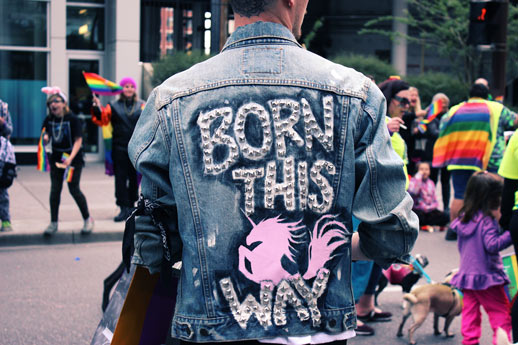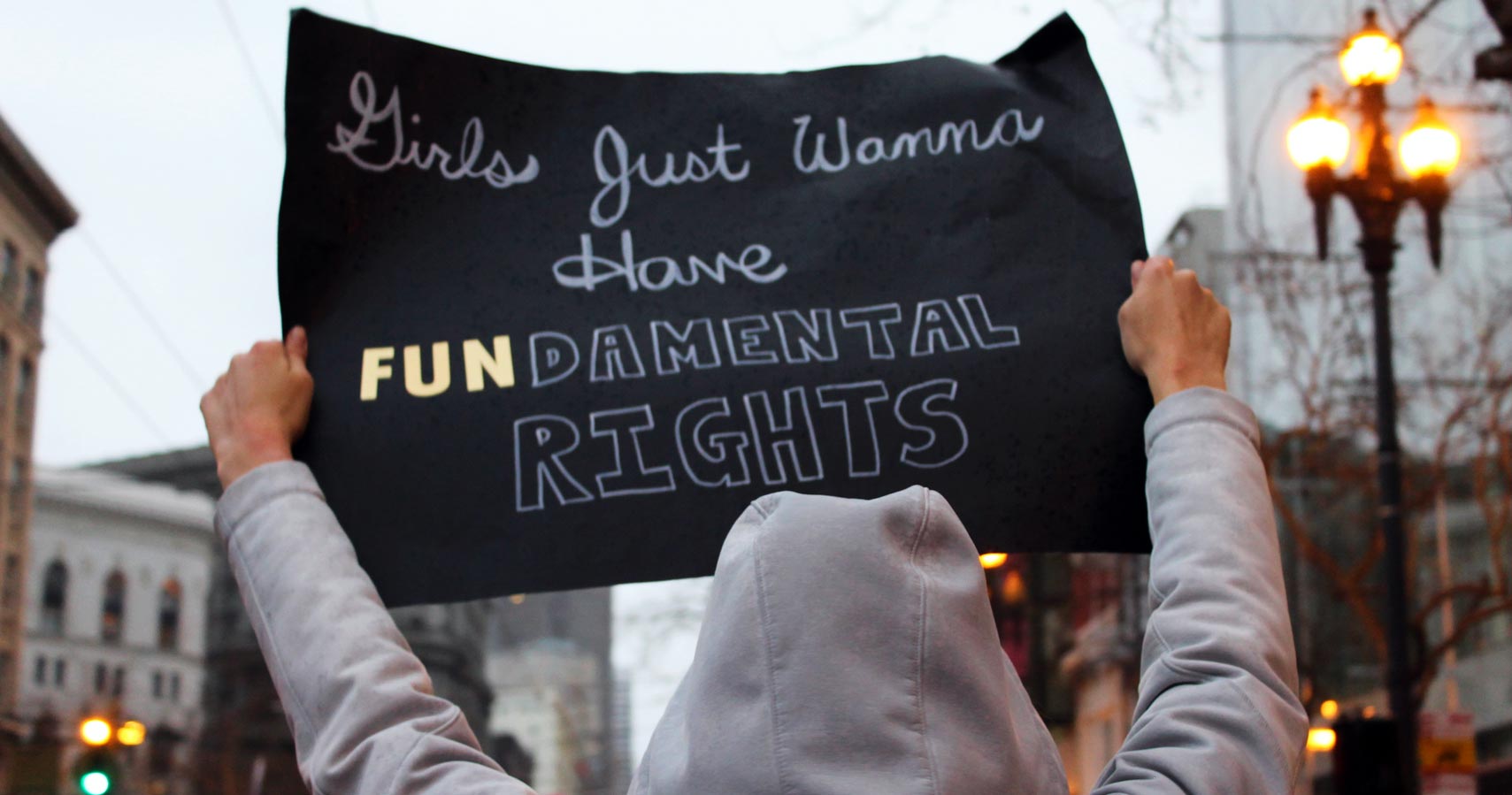
What to do when people use religion as an excuse for homophobia

It’s not uncommon to see the news ripe with stories of misogyny and sexism in the Middle East. Even white Christian men point their finger toward Islam as a religion riddled with oppression toward women. Of course, those same men would eschew accusations of oppression in Christianity as angry feminist propaganda. Some even go as far as to weave a pretty fairy tale of how religion and patriarchy set the foundation of a strong family and society while feminism seeks to rip the “stable” (i.e. traditional) family model apart. In the scholar community, however, it’s no secret that women and religion have a long and complicated relationship.
Once upon a time, long before the founding of the world’s most well-known faiths, religion seemed to value women or at least regard them as equals. As misogyny grew to be the norm in society and, by extension, politics, these oppressive views became the very foundation of today's major world religions. Though many believers are naive about the history of their faith, religion and politics have always had a deeply incestuous relationship and the rules, codes, commandments, etc. are largely a reflection of the values of the times.
Patriarchy is a common thread among many religions all over the world with scripture and beliefs that encourage female submission to men as a part of their devotion to God. Many religions, with Islam and Hinduism being prime examples, are quite vocal about their disdain for women pursuing higher education, preaching that a woman’s place is in the home serving her family. This belief is so deeply rooted that women are considered invaluable if they are not skilled in domestic activities. Even as we veer from traditional gender roles, religion provides a strong foothold for these antiquated, sexist beliefs to thrive in contemporary times.
Western religions, often called Abrahamic religions, including Christianity, Judaism, and Islam. An overarching tenet of each religion is that God is the head of man and man is, in fact, the head of woman. This can be seen throughout scripture in the Christian bible:
“Wives, submit yourselves to your own husbands as you do to the Lord. (Ephesians 5:22)
And again here:
“But I want you to realize that the head of every man is Christ, and the head of the woman is man, and the head of Christ is God.” (1 Corinthians 11:3)
It only makes sense that the disregard of women is woven into Christianity. The earliest accounts of Christianity are believed by some theologians to have been influenced by Greek philosophy. The most notable philosophers of the time, for example, Aristotle, openly believed women were inferior and without reason. So of course, the woman should need “guidance” from a man.
As stated before, Islam, to include Muslims, seems to be the most popular enemy in the war against misogyny and sexism. Though they are far from the only offenders, the violence toward and admonishment of women is glaringly obvious and unapologetic. Examples of the blatant disregard for women run rampant through the Qur’an:
“They question thee (O Muhammad) concerning menstruation. Say: It is an illness, so let women alone at such times and go not in unto them till they are cleansed. And when they have purified themselves, then go in unto them as Allah hath enjoined upon you. Truly Allah loveth those who turn unto Him, and loveth those who have a care for cleanness.” (2:222)
Even directions on how to “correct” a wife can be found, as seen here:
“Men are the protectors and maintainers of women, because Allah has made one of them to excel the other, and because they spend (to support them) from their means. Therefore the righteous women are devoutly obedient (to Allah and to their husbands), and guard in the husband's absence what Allah orders them to guard (e.g. their chastity, their husband's property, etc.). As to those women on whose part you see ill-conduct, admonish them (first), (next), refuse to share their beds, (and last) beat them (lightly, if it is useful), but if they return to obedience, seek not against them means (of annoyance). Surely, Allah is Ever Most High, Most Great.” (4:34)
Eastern religions and philosophies are those originating throughout Asia. This includes such religions as Taoism, Shinto, Confucianism, Hinduism, and Buddhism. It would be impossible to cover the intricate tapestry of faiths and philosophies that make up Eastern religion, for that reason we’ll turn our focus to the most prevalent: Hinduism and Buddhism.
Much like Islam, the oppressive views intertwined with Hinduism are well known throughout the world. Born in a country with a long, arduous history of misogynistic and sexist beliefs, these attitudes have firmly rooted themselves in not only the religion of Hinduism but the very culture of India itself. With Hinduism, again, we see the blurred lines between the politics of the time of the religion’s creation. A general feeling of the inferiority of women permeates religious and legal codes. It’s not uncommon for women to be treated as ornamental or regarded as property altogether.
Though many Hindu practitioners have largely moved away from Manusmriti, the earliest text in Hinduism, it holds the very foundation of Hindu law. This text openly denigrates women:
It is the nature of women to seduce men in this world; which is why even the wise are cautious in the company of women.”
And here:
“Food offered and served to a brahman after the Shradh ritual should not be seen by a chandal (a person belonging to low caste), a pig, a rooster, a dog, and a menstruating woman.”
Many have championed Buddhism as a sort of feminist-friendly religion, but sexist attitudes prevail in even this supposedly enlightened belief system. There is some debate on the historical Buddha’s beliefs toward women. Some believe that women were originally unable to become ordained as nuns while other theologians cite early scriptures that state that there were indeed Buddhist nuns in the formative years of Buddhism. Regardless, it remains true that nuns must adhere to austere rules beyond those required of Buddhist monks called The Eight Garudhammas or, translated, The Eight Heavy Rules.
Once one joins the path to enlightenment, can a woman enter Nirvana? We find more debate here. Because different sects or schools of Buddhism draw their beliefs from different texts, a single text cannot speak for all of Buddhism. While some texts hold both genders as equal, others deny certain things to women. For example, the Bahudhātuka-sutta states that there are certain things women cannot do, to include becoming a Buddha. This is a pretty major denial for a religion that is perceived as embracing equality.
The pervasive antiquated beliefs of religion provide a multi-pronged issue. At best, women experience an underlying social perception of inferiority and at worst, physical and mental abuse towards women is normalized. Most modern-day religious followers fail to realize that their faith was created at a time when misogynistic and sexist attitudes were prevalent and, as a result, heavily influenced their foundation. However subtle or blatant, the subjugation of women remains normative behavior, reinforced with the notion of religious devotion. Religion ingrains the oppressive views in the minds of its followers carrying the antiquated beliefs they were built on into contemporary society so few, if any, question societal norms that support the systematic oppression of women. Why then, do we allow texts so far removed from our modern experience to dictate our value systems and behavior? Perhaps one day a quiet nod to tradition, won’t be an acceptable excuse to the mainstream.
This article was written by KB from Washington D.C. in the USA